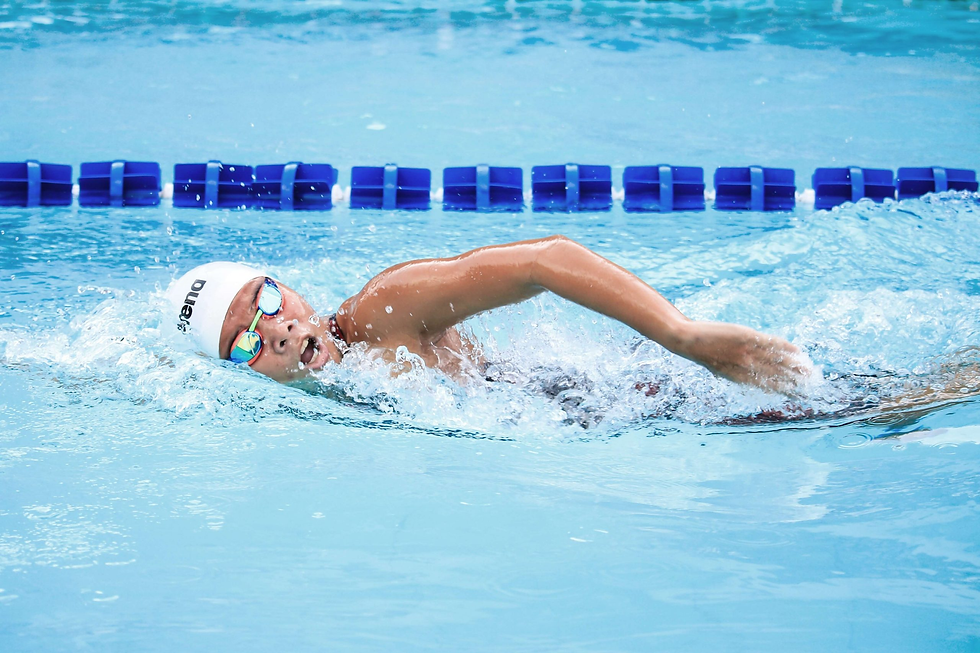Lifting as a Tall Person: Why It’s Harder and How to Thrive
- Niels Bunschoten

- May 4
- 4 min read
At 6’9”, I’ve spent most of my life towering over others—whether on the basketball court or now in Southern California running TFT Designs, where we make dress shirts for tall, slim guys like me. But one place where height isn’t always an advantage? The gym. After quitting pro basketball, I dove into lifting to stay active, alongside boxing, pickleball, and even surfing. Lifting, though, has been a unique challenge. My long limbs make every rep feel like a marathon, and I’ve had to adapt to make gains without injury. Let’s break down why lifting is harder for tall people, what research says, and how we can still thrive.
The Physics of Lifting: Why Tall Limbs Make It Harder
Lifting is all about work, and in physics, work equals force times distance. For tall people, the distance part is a killer. With longer limbs, we have a greater range of motion (ROM). If I’m bench pressing, my arms travel farther to get the bar to my chest than someone who’s 5’6”. A 2018 article from Tall.Life explains that for a 6’7” lifter (almost like me), the bar might travel 25% farther than for a shorter person, meaning 25% more work per rep with the same weight. That’s basic physics—force (the weight) times distance (my longer ROM) means I’m expending more energy per rep.

But do we have more muscle to compensate? Yes and no. We’re gonna have to put on our thinking hat here. Taller people generally have more muscle mass because muscle cross-sectional area scales with the square of height, according to a 2016 post on artoftall.com. If I’m twice as tall as someone, I’d theoretically have four times the muscle area. But here’s the catch: body weight scales with the cube of height, so I’m also carrying more mass—bones, organs, and all—making exercises like pull-ups or push-ups harder relative to my body weight. So not just harder, but harder relative to my body weight. My muscles might be bigger, but they’re not proportionally strong enough to offset the extra work.
The Hardest Lifts for Tall People: Bench, Squat, or Deadlift?
The “big three” lifts—bench press, squat, and deadlift—are staples, but for tall folks, they’re brutal. A 2019 article from stack.com notes that these lifts favor shorter people due to biomechanics. Let’s break it down:
Bench Press: This is often the hardest for tall people. My long arms mean the bar travels a huge distance, putting extra stress on my shoulders. A 2022 Men’s Journal piece highlights that the bench press demands serious control of the shoulder joints, which are already at risk with a long ROM. I’ve felt this—my shoulders ache often, but with careful warmup, I can manage.
Squat: Squats are tough because my long legs force a deeper knee bend to hit depth, increasing forward tilt and stress on my lower back. Besides terrible ankles (thanks basketball) we’re actually recommended to do front squats over back squats for tall lifters, as they keep the torso more vertical, which I’ve found can help.
Deadlift: This one’s a mixed bag. My long arms mean I don’t have to pull the bar as far off the ground, which is an advantage. But my long legs force my hips higher, putting my torso in a risky, near-parallel position. Switching to a trap bar deadlift has been a game-changer for me—it’s safer and lets me keep my chest up.
Beyond the big three, exercises like strict pull-ups and overhead presses are killers. A 2018 GMB Fitness article points out that pull-ups require more torque with long arms, and I can confirm—my pull-up attempts were humbling at first… and they still are.
Running and Swimming: How Height Plays In

Running as a tall person is a double-edged sword. Research suggests that longer legs can mean a longer stride, potentially making you faster. But the extra weight and leverage make it harder to accelerate and change direction. I’ve always hated running—my long legs make each step feel clunky, and I fatigue faster.
Research backs this: taller runners expend more energy to overcome their mass, despite the stride advantage.
Swimming, though, is where tall people shine. Swimmers like Michael Phelps (6’4” with a 6’8” wingspan) dominate because long limbs and torsos create more propulsion per stroke, as noted in a 2015 StrongFirst article. My height gives me an edge in the water—each stroke covers more distance, making swimming feel more natural than running or lifting.
Thriving as a Tall Lifter
Lifting as a tall person is harder, but it’s not impossible, and mostly, being tall is not an excuse. Modify your lifts—use trap bars, front squats, and even a pin presses to reduce joint stress. Focus on form to avoid injury, and don’t compare yourself to shorter lifters. At TFT Designs, we’re all about empowering tall folks to feel confident, whether in the gym or in a dress shirt that actually fits. So, tall lifters, what’s your toughest exercise? Drop a comment—I’d love to hear your story!


Comments